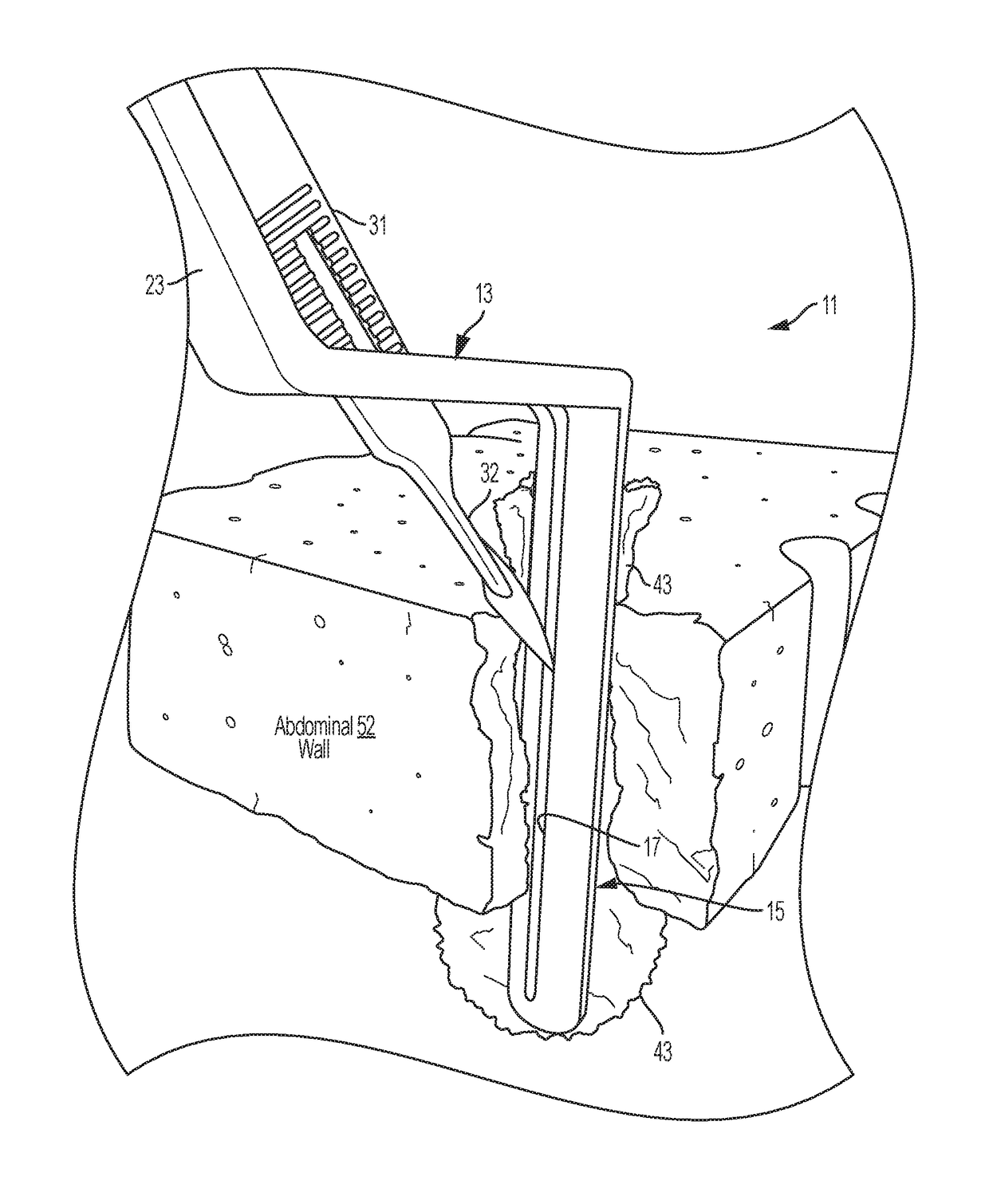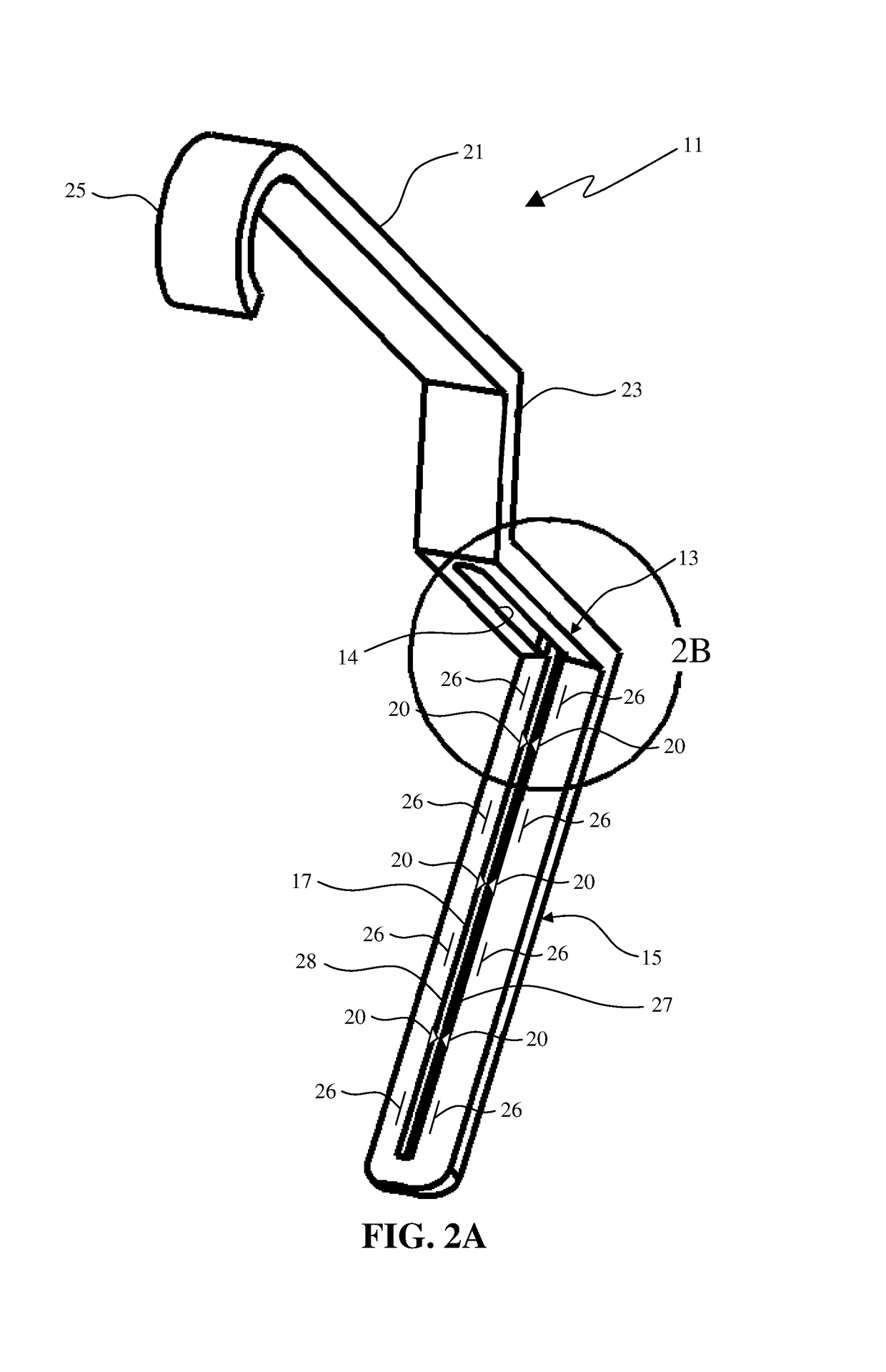Device and method for safely expanding minimally invasive surgical incisions
a minimally invasive, surgical technology, applied in the field of medical devices, can solve the problems of increasing the cost of the patient and the institution, low operative time with good results, and long operative time, so as to reduce the risk of accidentally cutting the recovery bag and/or the abdominal cavity, and facilitate the outward traction
- Summary
- Abstract
- Description
- Claims
- Application Information
AI Technical Summary
Benefits of technology
Problems solved by technology
Method used
Image
Examples
examples
[0064]Practice of an aspect of an embodiment (or embodiments) of the invention will be still more fully understood from the following example set, which is presented herein for illustration only and should not be construed as limiting the invention in any way.
examples set no.1
Examples Set No. 1
[0065]For instance, in a prototype a single-piece stainless steel surgical instrument, the purpose of which is to help remove impacted endoscopic recovery bags and organs and eliminate the risk of damaging the organ. An aspect of the prototype provides, a single-piece stainless steel surgical instrument consisting of a handle designed to be gripped in a single hand. The handle includes a curved end (catch) to provide an easy grip or leverage for a surgeon to hold. The handle is attached to a flat extension region (i.e., portion of a proximal portion) with a slot (or aperture) just wide enough to accommodate the width of a standard surgical scalpel handle (thereby providing a scalpel slot). The scalpel slot (aperture) is oriented along the midline of the flat extension region (i.e., portion of the proximal portion), beginning where the extension region meets the handle to the extreme end of the flat region opposite the handle, at the junction with a tongue (i.e., di...
PUM
 Login to View More
Login to View More Abstract
Description
Claims
Application Information
 Login to View More
Login to View More - R&D
- Intellectual Property
- Life Sciences
- Materials
- Tech Scout
- Unparalleled Data Quality
- Higher Quality Content
- 60% Fewer Hallucinations
Browse by: Latest US Patents, China's latest patents, Technical Efficacy Thesaurus, Application Domain, Technology Topic, Popular Technical Reports.
© 2025 PatSnap. All rights reserved.Legal|Privacy policy|Modern Slavery Act Transparency Statement|Sitemap|About US| Contact US: help@patsnap.com



